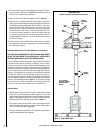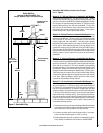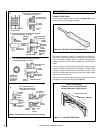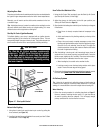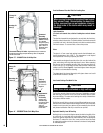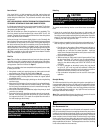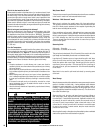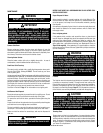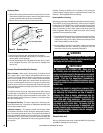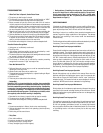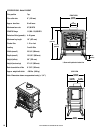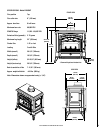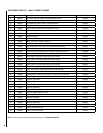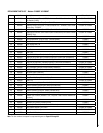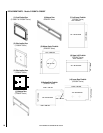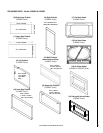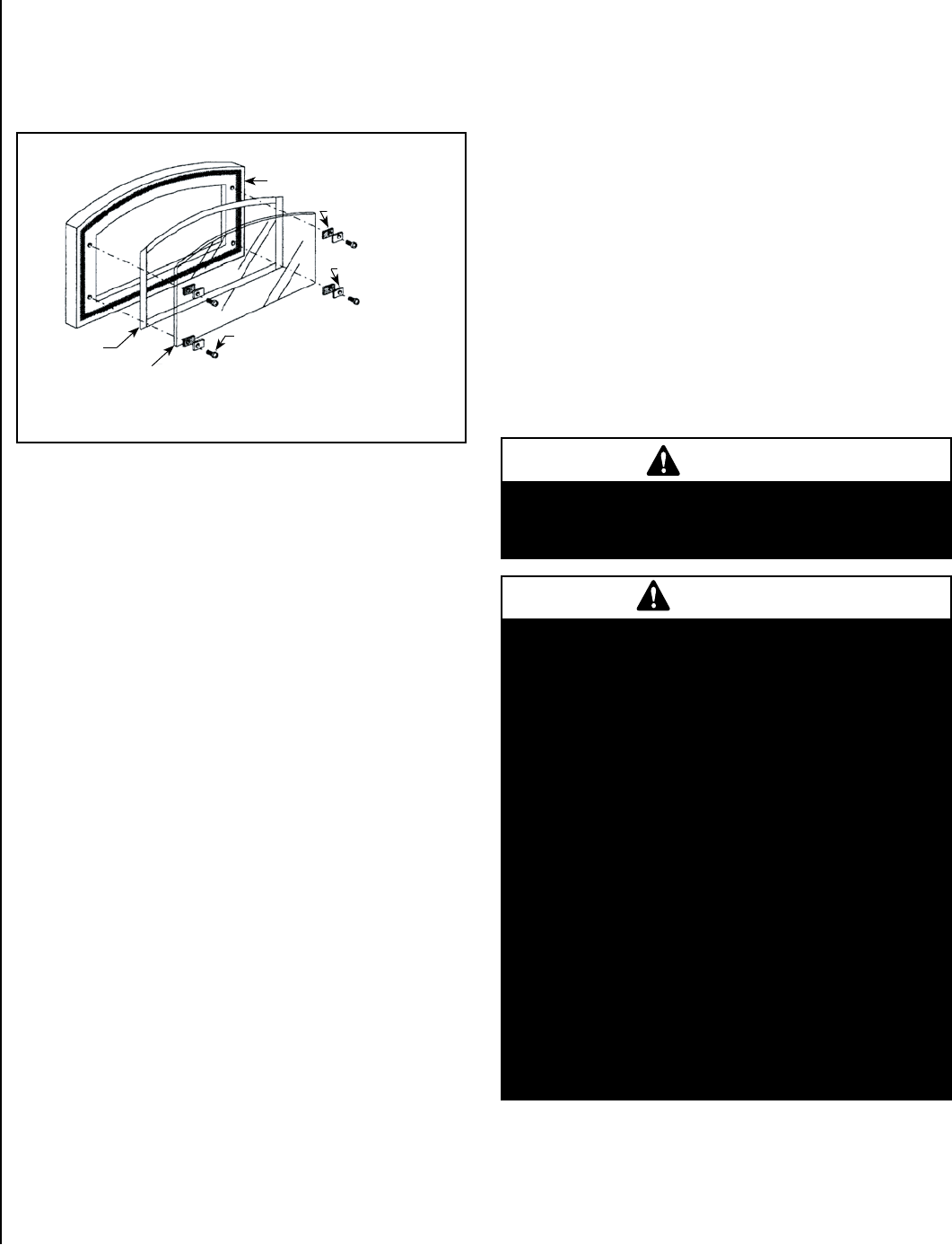
20
NOTE: DIAGRAMS & ILLUSTRATIONS ARE NOT TO SCALE
3. Clean the area where the glass with gasket will be installed.
4. Install new glass with gasket (use only factory 4-mm glass with glass
channel gasket. Do not substitute).
5. Carefully reinstall glass clips with gasket and screws. Be very careful
not to overtighten the screws (this could result in breakage when
stove is hot).
Creosote Formation And Need For Removal
What is Creosote - When wood is burned slowly, it produces tar and
other organic vapors, which combine with expelled moisture to form
creosote. The creosote vapors condense in the relatively cool chimney
flue of a slow-burning fire. As a result, creosote residue accumulates
on the flue lining. When ignited this creosote makes an extremely hot
fire. Also, creosote deposits tend to form in long runs of venting where
gases become too cool prior to exhausting. Note: Single wall pipe cools
rapidly, therefore installations using this type of flue are more susceptible
to creosote deposits.
To inhibit the build up of creosote, adjust the primary air draft control to
a medium-high or high setting for a 10-minute period each day. Do not
attempt to burn out heavy creosote accumulations in this manner. This
must be removed from the chimney by scraping or brushing to reduce
the risk of a chimney fire.
Burn Approved Fuel Only - This stove is approved for burning dry sea-
soned natural wood only. Using green or inadequately seasoned wood
may increase creosote buildup.
Inspection Frequency - The chimney connector and chimney should
be inspected at least twice monthly during the heating season to deter-
mine if a creosote buildup has occurred. If creosote has accumulated it
should be removed to reduce the risk of a chimney fire. If creosote has
accumulated (1/8" [3 mm] or more) it should be removed to reduce the
risk of a chimney fire. Experienced chimney servicing personnel should
be consulted.
Cleaning - Remove the baffle brick in the firebox prior to having your
chimney cleaned (should be done by a qualified chimney sweep). See
following – Removing Baffle Brick for Cleaning).
Removing Baffle for Cleaning
Before flue can be cleaned, the baffle in the stove firebox must be removed.
The CI1000HT has one vermiculite firebrick, which serves as a baffle for
the flue gasses. The CI2000HT has a 5-sided box made of ceramic fiber
brick that serves as a baffle. In both cases, the baffles are located just
above the secondary air tubes (which must be removed to access the
baffle). Suggestion: Wear a pair of leather work gloves when removing
secondary air tube assembly and baffle.
1. To access the baffle, the secondary air tube assembly must be removed.
Locate the four (4) screws, which secure the assembly into place
(located at the ceiling of the firebox). Remove the assembly and set
aside. Slide the baffle out and set aside.
2. Once the baffle is removed from the firebox, the flue can be cleaned.
The accumulated soot that is removed by brushing will fall to the
firebox floor where it can be removed and disposed of.
Reinstall Baffle Brick
After your chimney has been swept, reinstall the baffle brick (see Remov-
ing Baffle for Cleaning and reverse steps).
Replacing Glass:
1. Open the door. Using a phillips screwdriver loosen the four (4) screws
which secure the glass then carefully remove broken glass one piece
at a time (protective leather gloves are recommended).
2. Remove screws and clips from doorframe and set aside.
Door Frame
4 Ea. Clip
Gaskets
4 Ea. Glass
Clips
4 Ea. Glass Clip Screws
Glass
Glass
Gasket
Figure 15 - Replacing Glass
WARNING
Do NOT operate the stove without the baffle brick
properly installed. This will void the warranty and
the stove will not function properly.
IMPORTANT
IN THE EVENT OF A CHIMNEY FIRE - Make sure the
fuel loading doors are securely closed. Adjust the
primary air draft control to the lowest (most closed)
setting and ensure that the start-up air control is
closed. Call the fire department immediately.
After a chimney fire, the complete chimney system
should be checked by a qualified technician before
further use.
Consult your dealer for suggestions on proper chim-
ney care. Contact your local municipal or provincial
fire authority for information on how to handle a
chimney fire. Have a clearly understood plan for
handling a chimney fire. Establish a routine for the
fuel, stove and firing technique. Check daily for
creosote build-up until experience shows how often
you need to clean to be safe. Be aware that the
hotter the fire the less creosote is deposited, and
weekly cleaning may be necessary in mild weather
even though monthly cleaning may be enough in
the coldest months.



